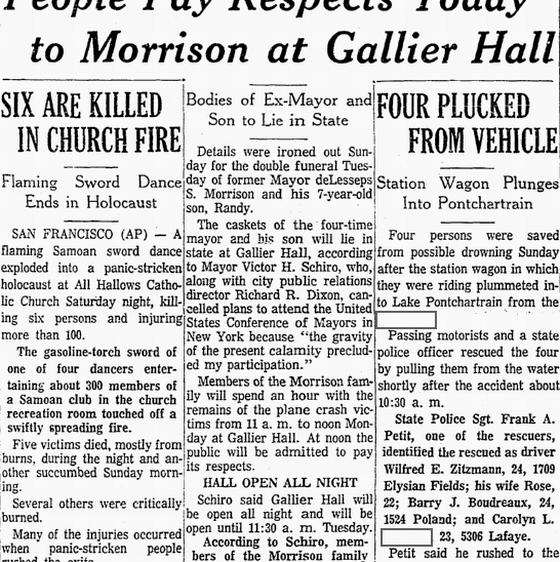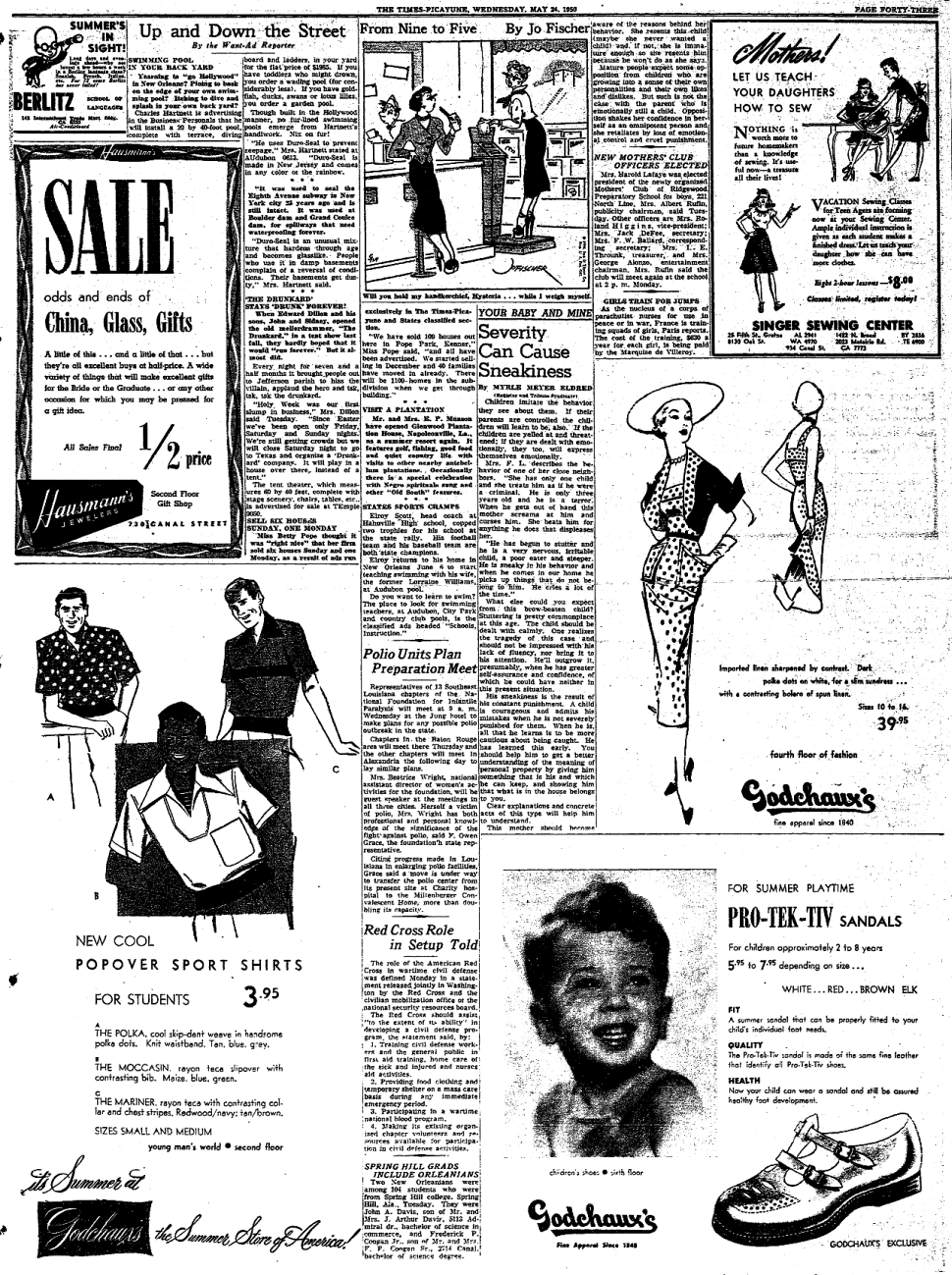|
Today in New Orleans History |
|
|
May 24



 

To receive an update for each day in New Orleans
history, join our facebook page
- Today in New Orleans History
Tweet
Born in Gretna on June 29, 1927, Stanley Joseph Ott, S.T.D. was educated at St. Joseph's school in
Gretna and following his graduation from St. Aloysius in 1944, he studied for the priesthood instead of entering the military
service. He St. Joseph Seminary College in Covington before entering Notre Dame Seminary in New Orleans. He continued
his studies in Rome at the Pontifical North American College and the Pontifical Gregorian University. On May
24, 1976, he was appointed auxiliary bishop of the Archdiocese of New Orleans and titular bishop of Nicives by Pope
Paul VI. Following the death of Bishop Sullivan, Ott was named the third Bishop of Baton Rouge by Pope John Paul II on January
13, 1983, a position he held until his death at the age of 65 on November 28, 1992.
Thomas B. Robertson, the third Governor Governor of Louisiana, served from 1820 until
his resignation in 1824. During his term, factional discord between established Creole citizens and newly arriving American
settlers created a political crisis. Robertson was seen as weak for not acting to resolve the ethnic differences, and when
he proposed moving the capital from New Orleans to Baton Rouge, riots broke out in the Crescent City and he was forced to
resign. He saved face by accepting a federal judgeship, and on May 24, 1824, he was appointed by President
James Monroe to a seat jointly held on the Eastern and Western Districts of Louisiana, both seats having been vacated by John
Dick. Robertson was confirmed by the United States Senate on May 26, 1824, receiving his commission the same day, and serving
thereafter until his death.(WIKI) On May 24, 1796, the Cabildo met in extraordinary session to deliberate on the possibility
of obtaining a quantity of flour which came in from Northern Ports, and which the merchants are not buying for their personal
speculation. The Governor Carondelet advised that he had ordered the flour held and had advised the Intendant that he thought
it should be bought for the account of His Majesty to be distributed later to the bakeries. It was resolved that the Cabildo
make the purchase through a loan from the Royal Treasury, and the flour deposited in the Royal Warehouses. (NOPL) |
|
|

To receive an update for each day in New Orleans history,
join our facebook page - Today in New
Orleans History.
Analytics |



